|
Preservation vs. Conservation
The Age-Old Conundrum
by Bob Brooke
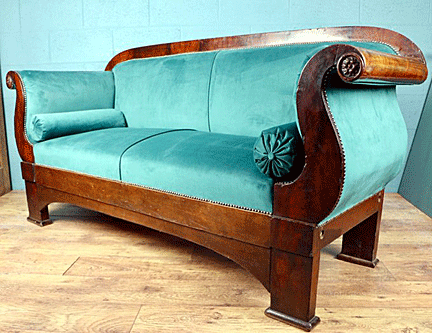 In
the world of antiques, whether to preserve a piece or conserve it has
always been a difficult decision. Museum curators always lean towards
conservation. They prefer to exhibit a piece of furniture, for example,
that still has its original finish and upholstery, even if one or both
are in relatively poor shape. Their goal is to make sure it doesnít
deteriorate any further. On the other hand, antique dealers lean towards
preservation because their goal is to ultimately sell the piece, so they
want it to look as good as possible. In
the world of antiques, whether to preserve a piece or conserve it has
always been a difficult decision. Museum curators always lean towards
conservation. They prefer to exhibit a piece of furniture, for example,
that still has its original finish and upholstery, even if one or both
are in relatively poor shape. Their goal is to make sure it doesnít
deteriorate any further. On the other hand, antique dealers lean towards
preservation because their goal is to ultimately sell the piece, so they
want it to look as good as possible.
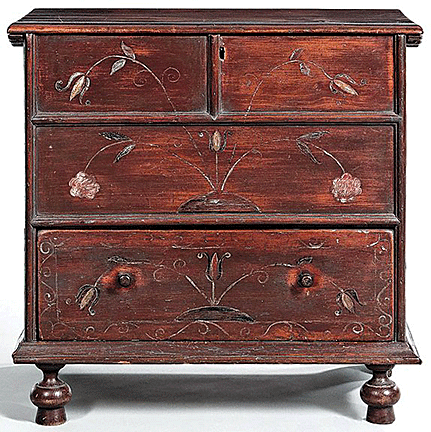 Among
serious antique collectors, objects made before 1830 should not be
preserved but conserved. Furniture patinas are just as important as the
structure of the piece. Those pieces dating from the 1830s forward are
often repaired and refinished which doesnít seem to affect their value.
Of course, any piece of high-end furniture, even from the late 19th and
early 20th centuries, requires the same care as that made before
1830óthe time when furniture making began changing from hand to machine
made. To clarify this further, itís important to know the difference
between preservation and conservation. Among
serious antique collectors, objects made before 1830 should not be
preserved but conserved. Furniture patinas are just as important as the
structure of the piece. Those pieces dating from the 1830s forward are
often repaired and refinished which doesnít seem to affect their value.
Of course, any piece of high-end furniture, even from the late 19th and
early 20th centuries, requires the same care as that made before
1830óthe time when furniture making began changing from hand to machine
made. To clarify this further, itís important to know the difference
between preservation and conservation.
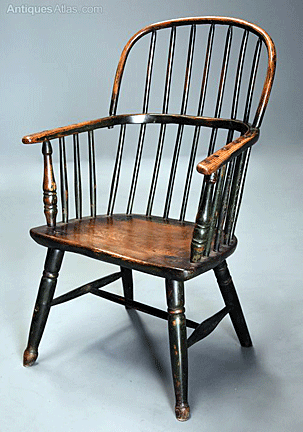 Preservation
involves keeping an antique from destruction and seeing to it that itís
not irreversibly altered or changed. It dictates that in order to retain
the maximum amount of original material, repairs must be done with
minimal or no changes to the original building structure and in like
materialsóand if possible using the same methods. Preservation
involves keeping an antique from destruction and seeing to it that itís
not irreversibly altered or changed. It dictates that in order to retain
the maximum amount of original material, repairs must be done with
minimal or no changes to the original building structure and in like
materialsóand if possible using the same methods.
In conservation, all of the original material needs to be preserved in
as unaltered a condition as possible. Any repairs must not remove, alter
or permanently change any original material. All repairs or additions
must be reversible and removable without affecting the condition of the
original material now, and in the future.
Conserving an object means the object dictates all choices of how it
should be treated. It doesnít involve any artistic experimentation on
the object. Itís important for collectors, restorers, preservationists,
and conservators to have a basic understanding of that.
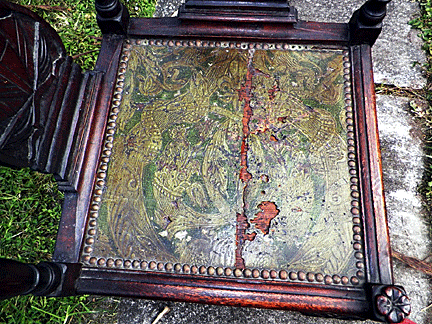 The
conservation of antique furniture combines three major processes: The
minimization of deterioration (preservation); the consolidation
(stabilization) of artifacts as they currently exist; and the repair/replacemenf
or restoration of existing damage. The
conservation of antique furniture combines three major processes: The
minimization of deterioration (preservation); the consolidation
(stabilization) of artifacts as they currently exist; and the repair/replacemenf
or restoration of existing damage.
Most antique furniture dating from before 1830 requires some form of
conservation while that produced afterward often undergoes restoration.
The American Institute for Conservation of Historic and Artistic Works
notes that stripping and refinishing furniture is no longer a standard
practice. An early finish is as important to historic furniture as are
any of the other original elements. The finish coating offers important
data to researchers and is part of the history of the object and once it
is removed, it cannot be recovered. The removal and replacement of a
surface finish is considered a last ditch effort after other
conservation methods have failed.
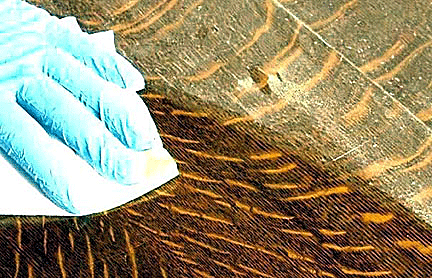 Today,
there are products on the market that enable the cleaning and
restoration of the finish on a piece of furniture without stripping. So
the warm glow of the patina that has evolved over time can be both
protected and enhanced. And while this may work well for pieces in
relatively good condition, there are a lot in poorer condition that
require extensive work to bring them back to life. Today,
there are products on the market that enable the cleaning and
restoration of the finish on a piece of furniture without stripping. So
the warm glow of the patina that has evolved over time can be both
protected and enhanced. And while this may work well for pieces in
relatively good condition, there are a lot in poorer condition that
require extensive work to bring them back to life.
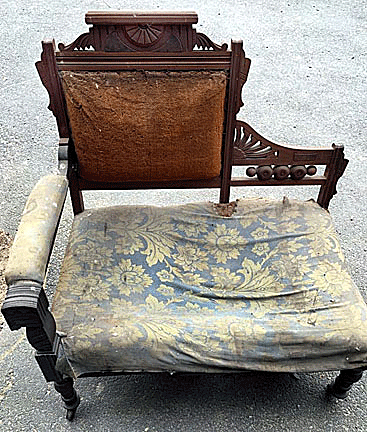 Antiques
restoration can be an arduous process if the goal is total and complete
authenticity. For conservators, authentic material is the actual
material used in the construction and decoration of the object. For
example: A chair with its original upholstery, even if itís faded and
shredded, is authentic for the conservator and possesses historic value
even though it may not be good enough to be put on exhibit. The same
chair can be "restored' and looking as it did when new, with replacement
fabric copied from the original weave and colors and upholstered
according to the known design of that particular piece of furniture.
This would represent the other kind of authenticityóthe kind often
employed by antique dealers. Antiques
restoration can be an arduous process if the goal is total and complete
authenticity. For conservators, authentic material is the actual
material used in the construction and decoration of the object. For
example: A chair with its original upholstery, even if itís faded and
shredded, is authentic for the conservator and possesses historic value
even though it may not be good enough to be put on exhibit. The same
chair can be "restored' and looking as it did when new, with replacement
fabric copied from the original weave and colors and upholstered
according to the known design of that particular piece of furniture.
This would represent the other kind of authenticityóthe kind often
employed by antique dealers.
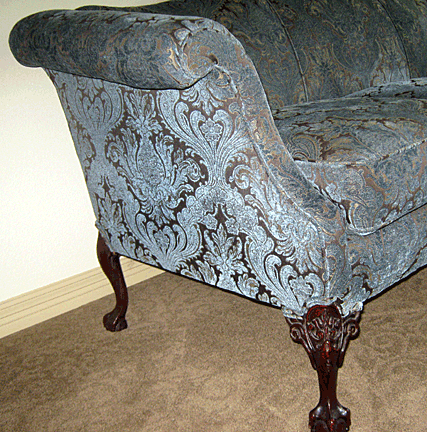 American
furniture from the mid-19th century probably received new upholstery
about every 30 years. Sometimes new fabric, and at other times worn
upholstery was entirely. American
furniture from the mid-19th century probably received new upholstery
about every 30 years. Sometimes new fabric, and at other times worn
upholstery was entirely.
removed before the new covering was applied. Conservator-restorers can
sometimes find threads of the original fabric on the chair frame,
usually around tack holes. This can guide them to the creation of a
reproduction of the original upholstery if an original fabric isnít
available.
During the 1850s, furniture manufacturers developed a synthetic varnish,
cellulose nitrate. But it wasnít available in a formulation suitable for
commercial use until the late 1920s.
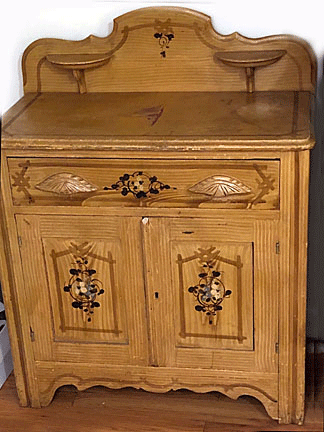 Unfortunately,
cellulose nitrate discolors and becomes brittle as it ages, so over
time, the coating on furniture from the 1920s and 1930s can turn yellow
and opaque. It can also crisscross some places by a fine network of
cracks, or the varnish can fall off completely. The early date and
rarity of this original coating makes it important to retain the varnish
on furniture despite these problems. Unfortunately,
cellulose nitrate discolors and becomes brittle as it ages, so over
time, the coating on furniture from the 1920s and 1930s can turn yellow
and opaque. It can also crisscross some places by a fine network of
cracks, or the varnish can fall off completely. The early date and
rarity of this original coating makes it important to retain the varnish
on furniture despite these problems.
Webster's New Collegiate Dictionary defines restoration as bringing back
an object to a former condition. In restoring an antique the most
important requirement is the final appearance. The owner of the piece
must determine the most desirable period of an object's life, and the
restorer does whatever is necessary to return the objectís appearance to
that period.
Itís up to the collector to choose professionals who can determine the
age of the piece and what itís condition looked like originally, then
provide the expertise to bring the object back to that condition. Itís
also the professional restorers responsibility to allow the piece to
determine how it should be restored rather than allow the owner to
overrule that choice.
<
Back to Antiques Extra! Archives
Next Editorial >
|
